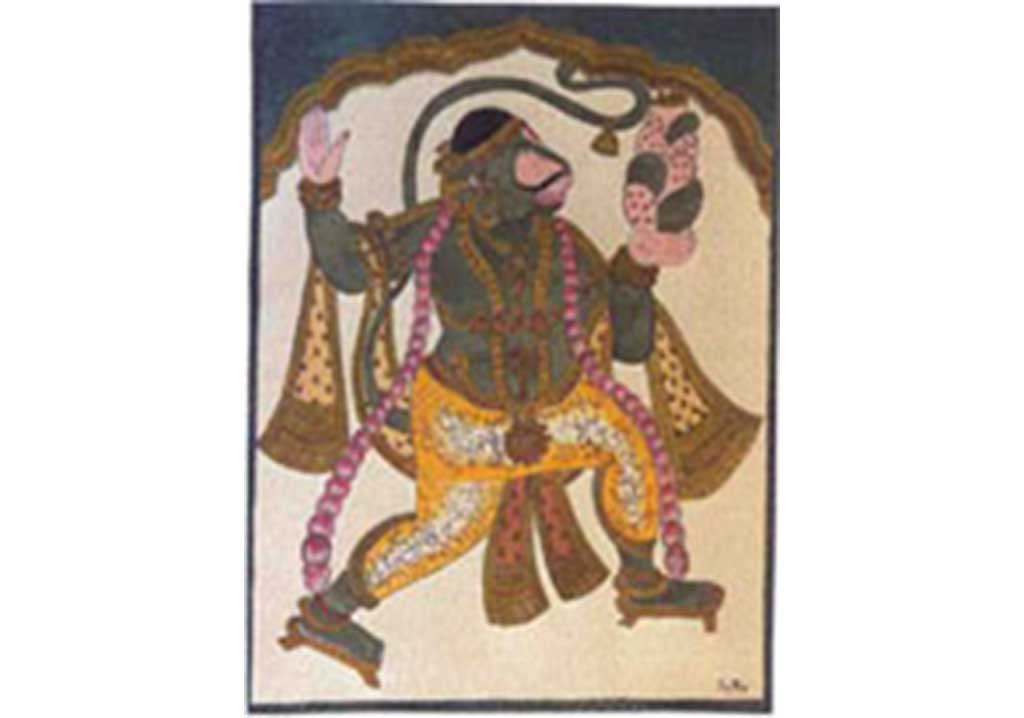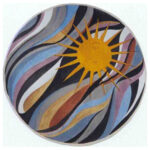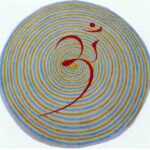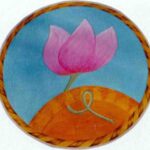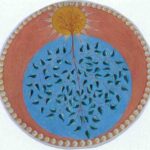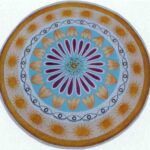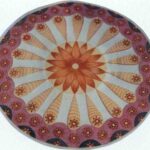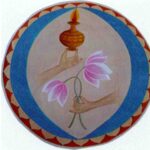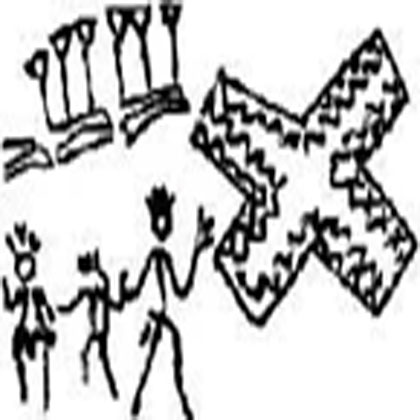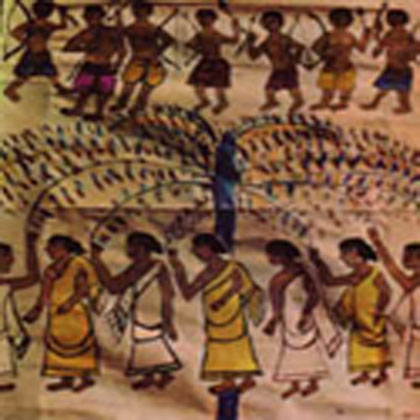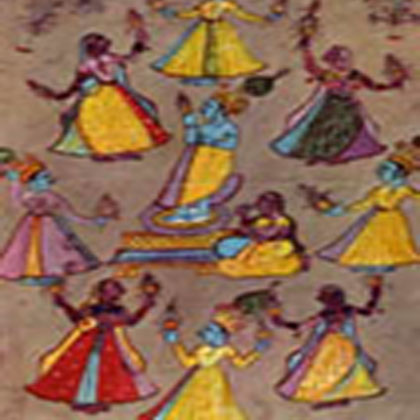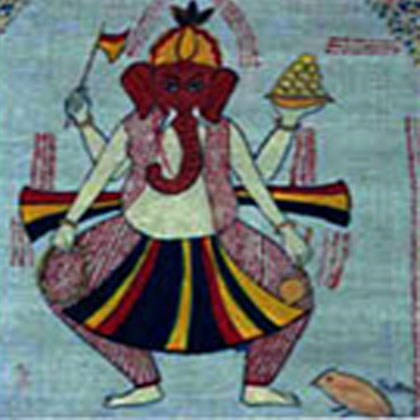Folk Paintings
India has a rich heritage of folk or village art. Lesser known traditions of Indian paintings are called
tribal and folk arts and date back to the period that may be referred to as timeless. These living
traditions are intrinsically linked with the historic cultural settings from which they arise and,
ultimately nurtured the local people. The traditions contain in themselves symbols, designs and
figures that are found in ancient cave paintings. This art also includes the profound philosophy spelt
out in ancient sculptures that are also a rich storehouse of symbols, motifs, and religion. This art is
both decorative and ritualistic and wrapped up in mythology.
| Vedic Symbols
|
Ritu Chakra
|
Animal world
|
Nritya
|
Alpana
|
Village life
|
Mythology
|
|
Vedic Symbols
The drive to search for the mysterious source of life and cosmic creation out of which the universe emerged is a question that has remained unsolved and the ideas and links the various mythic and philosophical versions. There are many variants of the history of creation and many metaphors described by the indescribable Absolute. The concept of creation and of Absolute finds expression at the village level too through symbols and myths.
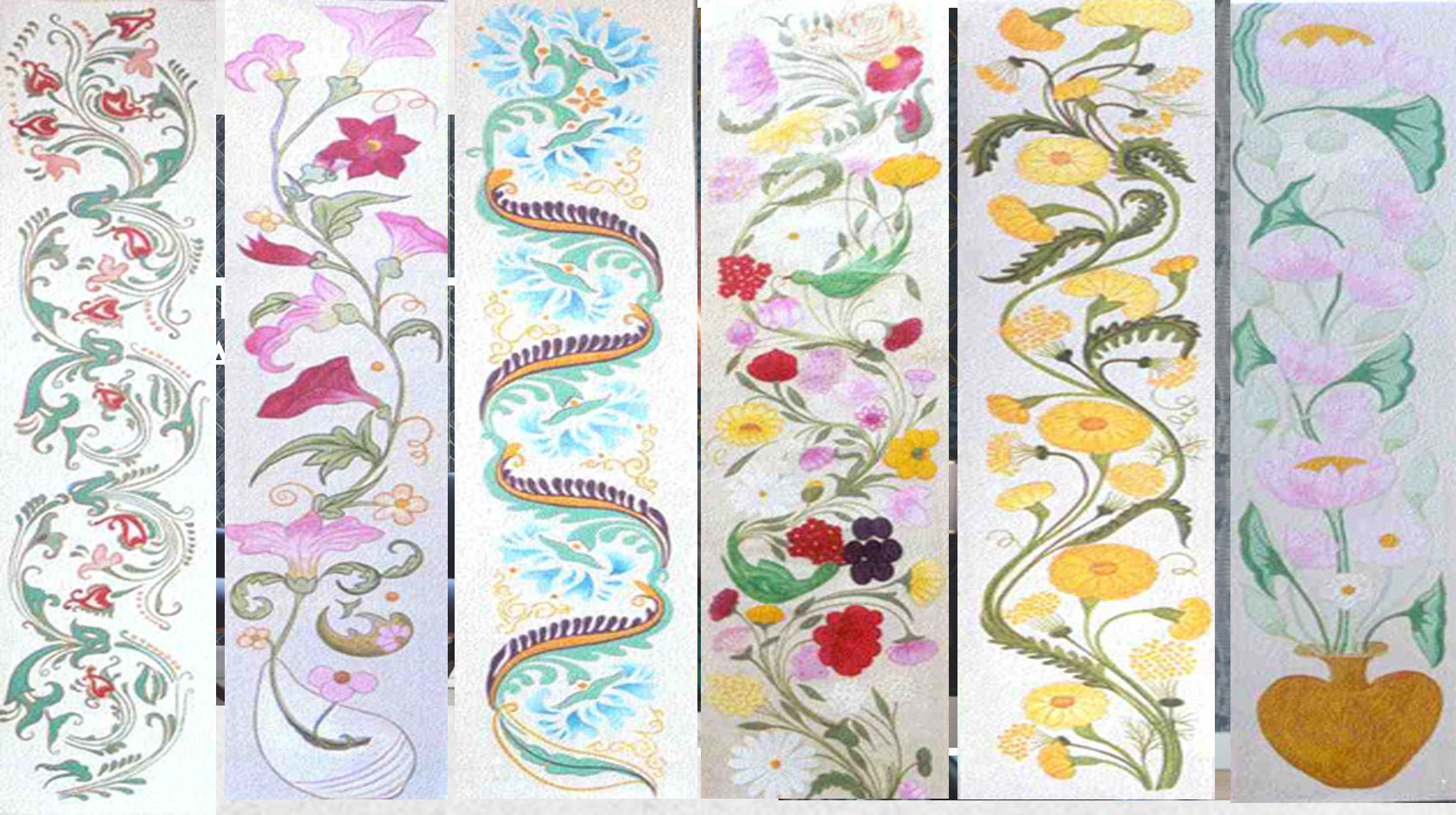
The paintings were made in 70’s and 80’s when folk art was not so well known. It was limited to the wall and floor in villagers. Not much printed material was available at that time. I saw them at site and roughly copied them on paper. Then I collected the themes and made a final painting in my leisure time. I was thus able to bring the real and genuine folk style, particular to the area, picked up straight from the site-the wall, floor or the pujaghar and sometimes from printed material. The paintings gives a real feel of genuine folk art and culture of the area.
The orderliness or the rhythm of the universe set by the Supreme Reality is called Rta. One manifestation of this rta is the seasons or ritu. The change of seasons is regarded by all as something more than a phenomenon of nature. It is an occasion to rejoice. Each season is welcomed with celebrations and festivities, songs and dances. This is more so in villages.There are celebrations at sowing and harvesting time. The advent of winter, spring as also rainy season is celebrated with songs, dances and rituals. In India there are six seasons. In each of these nature adorns itself with a variety of colours. The symphony of colours of different seasons has been captured in the paintings.
Animal world
Animals have found a place in all ancient religions. Exceptional powers have been attributed to them and they are normally shown as composite animals. Typical exmples in the Indian context are: matsya (fish), kamadhenu (cow), airavat(white elephant sometimes shown with six trunks) and uchchaisravas (white horse).
Vedas or ancient scriptures constitute a blueprint of creation. Vedic philosophy covers a wide spectrum of subjects: Starting from Brahma, the ultimate and Supreme Reality and architect of the universe, he is also the starter of cosmic order, from the broad purpose of human existence to the details of good thoughts and good deeds. The philosophy extends from the purpose of human existence to details of good thoughts and deeds almost in a prescriptive mode. The ideas have been represented through vedic symbols.
Nritya. – Dance
In India dance is considered a form of worship. There is an interesting myth about how dance performance started. The gods were bored with routine heavenly activities. So they sent Indra to request Brahma to write a play in which they could see, hear and understand the real nature of joy. Brahma therefore started to write a Veda, known as the fifth Veda or Natyaveda, for which he extracted parts from other Vedas. He took recitation from the Rigveda, song, mime and rasa respectively from the Sama, Yajur and the Atharvaveda. Thus was created the Natyaveda, the Veda of theatre. Then Brahma called upon Viswa karma, the vastukar or divine architect, to build a theatre in Indra's heaven.
When the theatre was completed, sage Bharata took over the production of the play. Siva was the dance artist who performed the famous tandava nrtya which symbolises the motion of cosmos. Parvati, his wife performed the lasya dance. Vishnu also gave a performance. The play was such a success that Bharata was asked to bring the knowledge of the Natyaveda down to the humans. Here he wrote the famous Bharatanatyashastra which means science of dances of Bharat, the document which is the source of all Indian dramas. A dance hall is therefore always constructed in a temple for a performance before the deity. Even today a dance before the deity usually constitutes a ritual as a part of the daily worship and prayer.
In India apart from dance before a deity, a group dance is performed on any joyous occasion, be it a marriage, change of season, harvest time, onset of rains, winter, spring and so on. Every region and every state of India has its own dances. The diversity of the Indian subcontinent is seen in the abundance of a variety in dances.
Dancing human figures in the Paleolithic paintings have elastic S twisted body and limbs dynamically thrown in air in vigorous activity of dance. It is the climax of expression achieved by single out lines. It has no parallel in the rock art of later periods.
The life of the tribals is like that of their prehistoric ancestors – full of festivities and all festivals are full of dance, ribald songs, merry, drinking and ceremonial sacrifies
Raslila of lord Krishna is another famous dance of Hindu gods. Here every person yearning for a spiritual union with Krishna became a gopi (milk maid). In India one cannot conceive of cosmos without Siva as Nataraja -the lord of dance and Krishna the Natavara, the dancer.
Lord Ganesh signifies wealth and knowledge. When he is in a dancing pose he is said to be in his best mood for dispensing happiness. This is in Rajasthan folk art style.
The mythology of Siva is full of references to his different dances. Siva’s famous Tandava nritya is a furious dance of destruction. According to the myth, Siva performed this dance when asura, the enemy of god, attacked the city but was finally detroyed by the gods.Nataraj means Lord of dance. Siva, the destroyer and preserver is also worshipped as Nataraj. He is the originator of dance. When he is a destroyer he performs the Tandava dance.
In the painting Siva performing a dance , the rhythm of which is the life of the universe. Here he is shown in a dancing pose with four arms two of which hold a drum and a flame each. The third makes a mudra or gesture and the fourth points to a human being beneath his feet. The drum stands for the call of the soul of man, mudra is the sign of fearlessness or perseverance without fear, the flames stands for knowledge and the foot on the human form shows that Siva is the master of all, for he has conquered passions of man.
Nartiki
Nartaki was the favourite subject in ancient Indian art of painting and sculpture. Nartaki were painted on the wall of ancient palaces when the court scene of Indra in heaven is depicted. Later on nartaki was given name as nagarbadhu. In Indian temples there is a tradition of providing a dance hall. The Indian dances as also the social and cultural ethos associated with the dancers and the profession of dance has evolved greatly over the centuries. Here Nartiki is preparing for dance performance.
Alpana
Alpana is traditional art with magical significance drawn to invoke the great powers for protection. This art is practised all over India by women, both rich and poor

Ritual aplana
The story of rituals consisting of fragmentory pictures illustrative of events. The themes of these illustrations are consequently more varied. In each ritual different motifs are drawn. Women draw designs on mud floor and walls and courtyards. They are drawn by means of a small piece of cloth wrapped around a finger and soaked in thin ground paste of rice. The scope of the ritual drawing increases according to the theme of the story.

Vrata Alpana
Vrata alpana is a woman’s art, born of unconscious and ancient knowledge, potent with power and energy, to be used by woman as a mark of the auspicious for worship, adoration and protection of the earth and home. The making of vrata alpana is referred to as writing, a medium of communication, and never as painting. One role of these women is to draw vrata diagrams on the floor and wall. The most common wishes of vratas are for long life and general well being of the family.
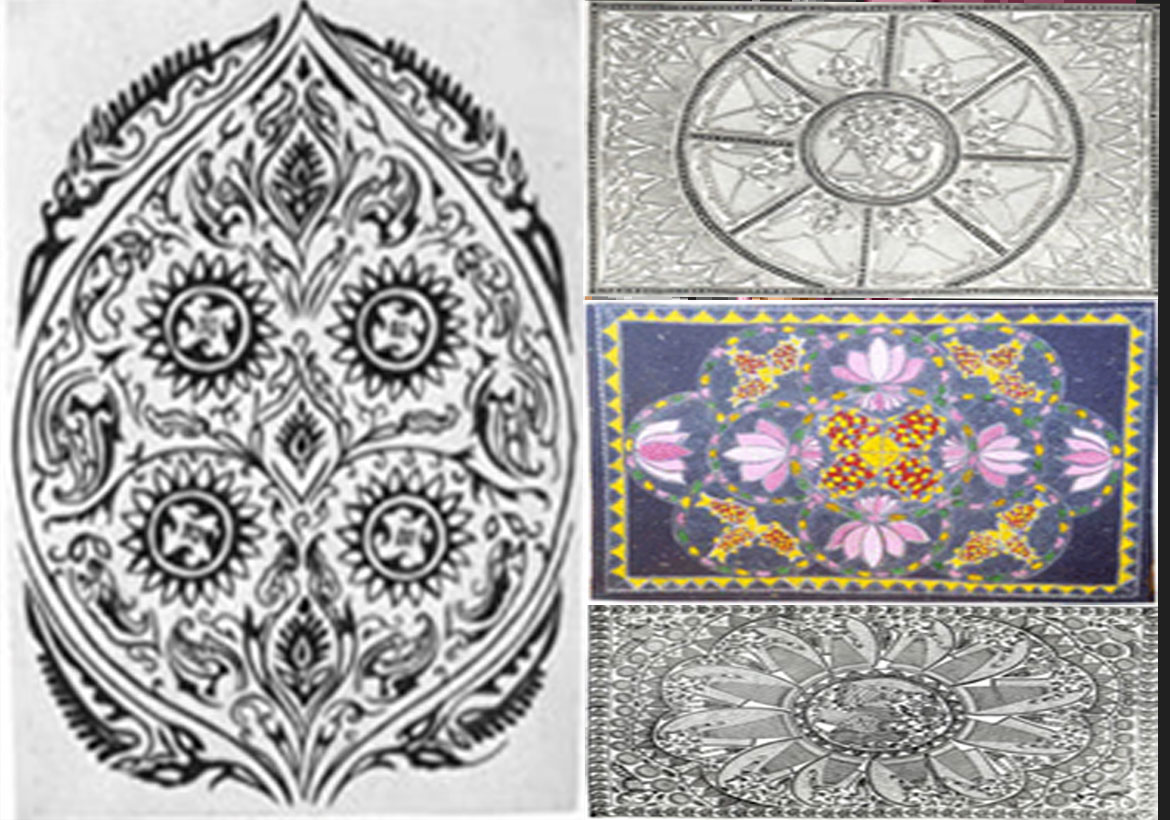
Decorative
Decorative mandala is drawn at the entrance of the house, courtyard in temples and before the shrine in the house, as a daily spontanneous expression of woman’s creativety.
Glimpses of Village Life
India is a country of villages. The religious occasions and rituals especially in villages are a pageant of lively colours. Ladies are dressed up generally in vibrant colours. A well, a house under construction, women separating grain from chaff, young girls aorning their palms with henna, a religious gathering and departure of a young bride to her in-laws place are typical village scenes.
Hindu Mythology
Trimurty
Indian mythology speaks of three supreme gods, Brahma, Vishnu and Siva, responsible for creation, sustenance and destruction of the universe. . trimurty stands for a set of powers which has the potency to set up the universe! trimurty refers to energy the release of which leads to the idea of trimurty of gods seems to have its origin in solar cults for the three powers of the sun ie the fertilising warmth which generates life, preservation with light of the sun, and, destruction with its burning rays.
It reflects the basics of Vedic religion Brahma, creation, cosmic order, the dualism in creation and good and evil down to their importance in day today existence. Myths found in religion are imaginative, simple in expression, yet carry a profound philosophy. the paintings are related to various themes such as cosmos, power of nature named Brahma ,Vishnu, siva, Durga ,Ganesh and Lakshmi etc.each of these has variations depending on which area they come from.
Devi
Mahadevi is the goddess all-encompassing form of a female deity manifested herself in many forms, chiefly Parvati, Gauri, Durga and Kali. She is the most complex and most powerful of the goddesses. Her ancestry to great mother goddess, the symbol of fertility, protector of all beings and creator of life, and as escort of Siva (his Shakti or female energy) mirror in her nature. As Siva manifested according to the situation, so did Devi and acquired a different name for herself. Devi has been exalted in Puranas at different places and in different situations.
The consorts of Hindu triad are also to be found in a corresponding female triad: Lakshmi, Saraswati and Durga
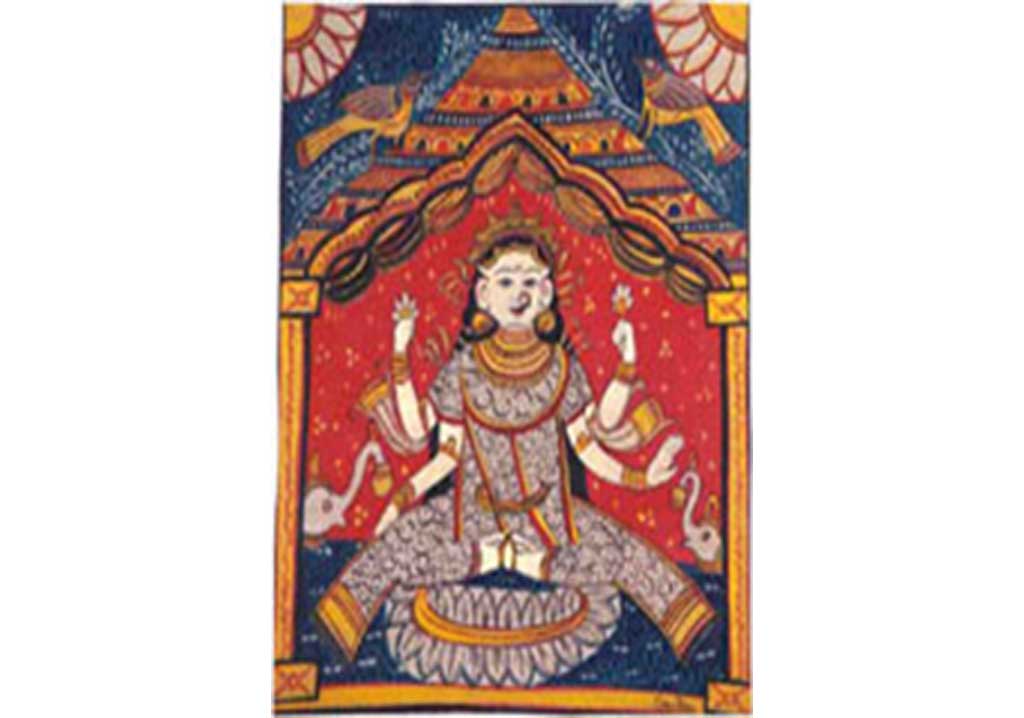
Ganesh
He is one of the most popular deities. As the remover of obstacles, he is invoked at the start of a new project. He is the god of wisdom and prudence, an able chronicler and is learned in scriptures.
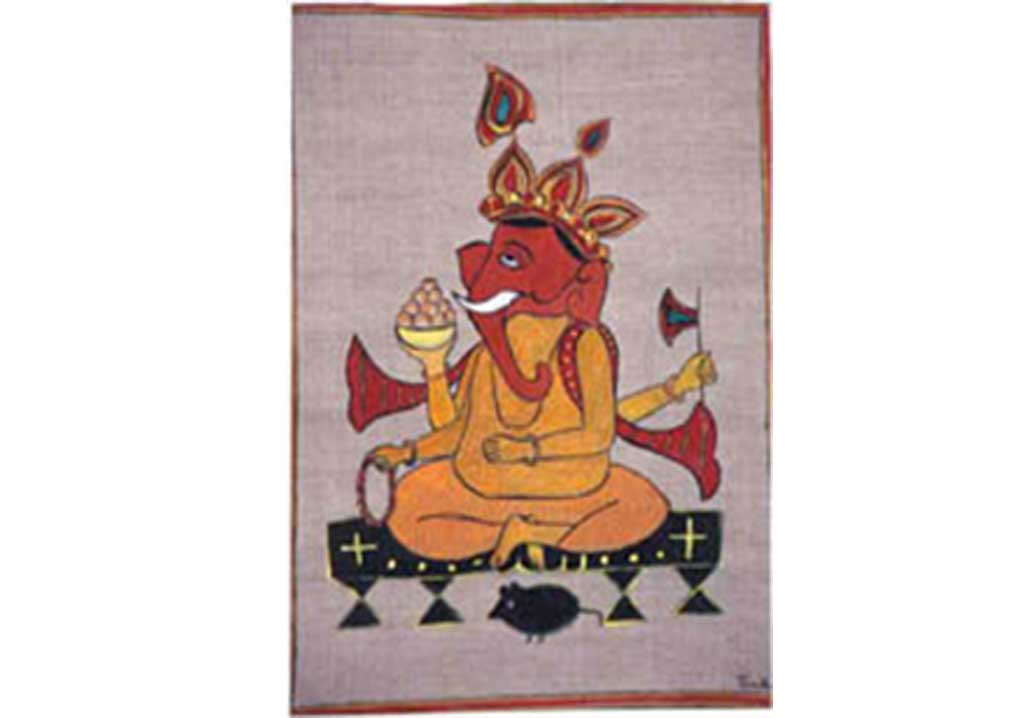
Rama
Vishnu’s seventh incarnation was Rama who came into the world to quell the powerful demon king Ravana.
The story of Rama and Sita is the main theme of a major epic of India and is full of interesting incidents, encompassing the then social life and values in India, traditions and conventions, rituals, life of the royalty and the common man.
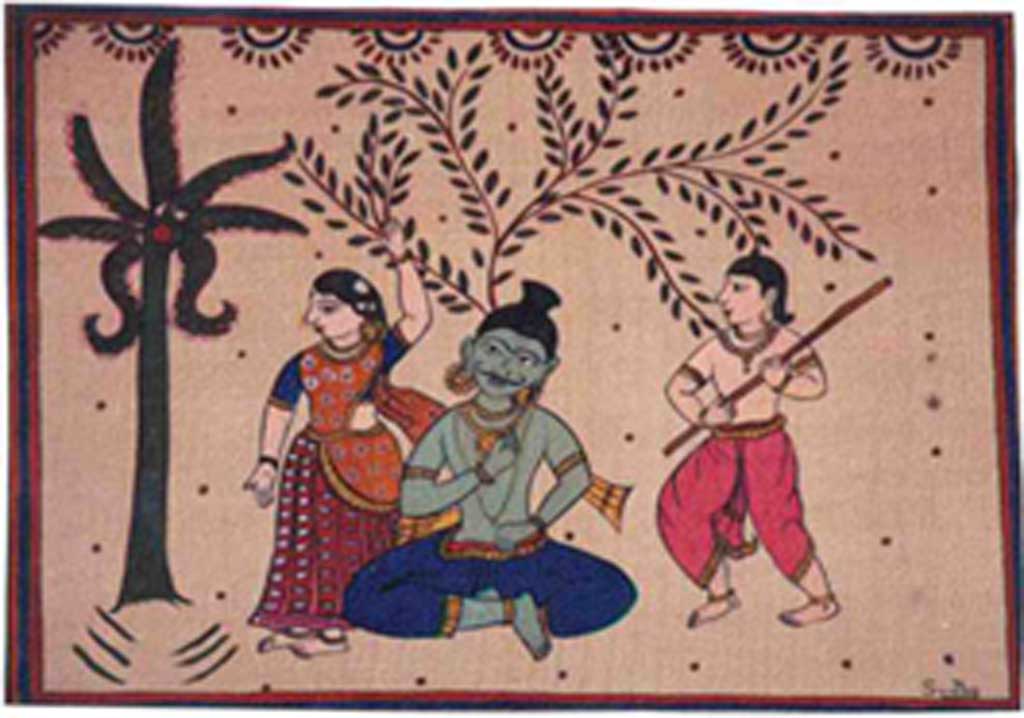
Krishna
Vishnu’s eighth incarnation Krishna has generated many legends and tales, far more than any other character in Indian mythology. He came on to the earth to destroy Kansa a demon king of Mathura. As a child he performed great feats of strength much to the astonishment of his simple mother and others. As a youth, like anyone at that age, he dallied with Radha and other village belles. When he grew up as a man he achieved that for which he was born. In his middle age he became the ruler of Dwarka and took active part in the Mahabharata war, acting as Arjuna’s charioteer and pronouncing his great teaching on the subject of dharma and bhakti.

Radha Krishna
Krishna’s childhood and his romance with Radha and other village belles in Vrindabana is one of the favourite subjects of Indian artists and poets.
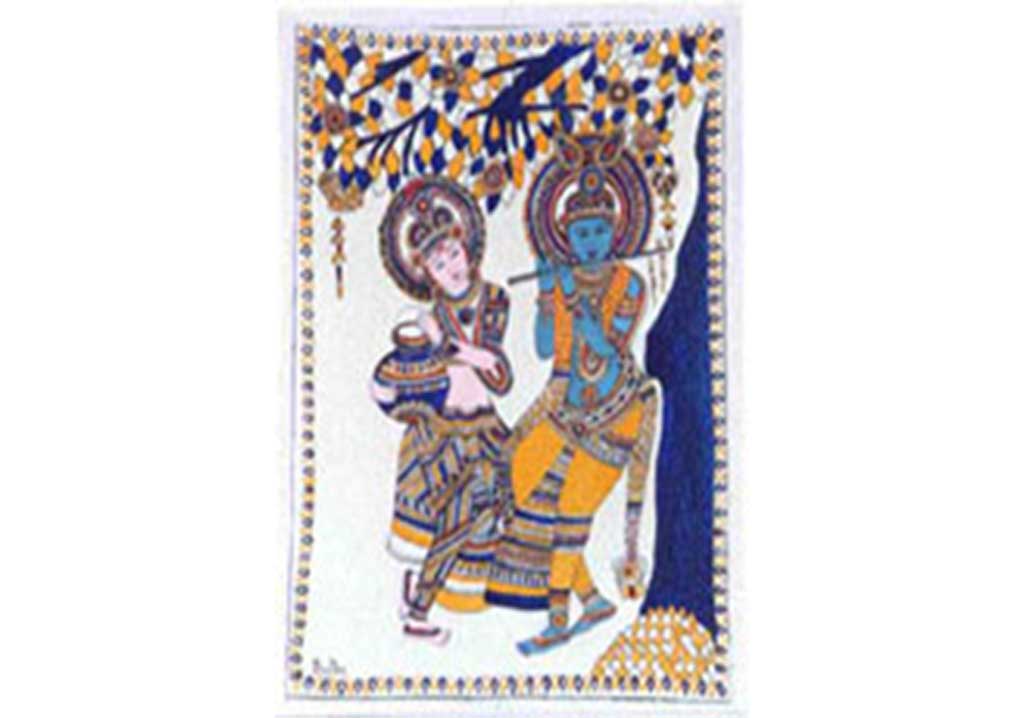
Hanuman
Hanuman is one among the animals personifing god or heroic, godlike beings with magical powers, and son of Vayu or wind God and the monkey nymph Anjana. He is most popular and most worshipped as village deity and he is a divine agent invoked as a protector against whirlwinds and as fertility god.
